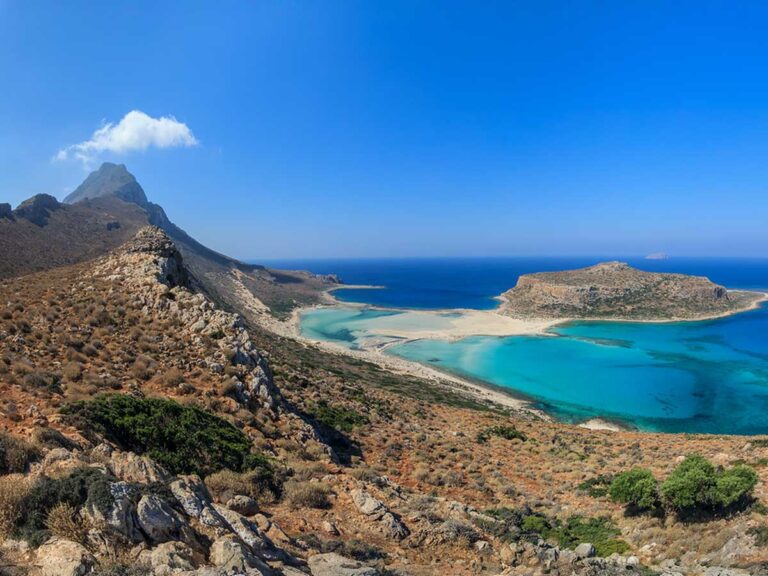POLYRINIA the ancient city
In the archaic times, the city of Polyrinia was one of the most important and most powerful cities in West Crete. The city was built amphitheatrically on a top of a hill, six km south of Kissamos. Polyrinia was Kissamos port. On the top of the hill stood its Acropolis, “T” shaped and surrounded by cyclopean walls.

At the beginning, the Polyrinians used to live in small settlements, but with the descent of Archaeans and Lacedaemonians they got used to live within the stronghold which they fortified with walls.
The name of the city, meaning “Many sheeps”, indicates the posessions of its inhabitants.
Polyrinia was one of the cities forming the union of Cretan cities, with Gymenis II of Pergamos, in 170 b.C. ; the city had also signed the treaty of alliance with the lonicGeo, in 193 b.C.
The people of the area were devoted in worshipping their gods. At the site of modern Chalkoklissia used to be the temple of Diktyna Artemis. Besides Diktyna the people used to worship the Cretan-born Zeus and Athenaq with helmet and spear, fact that bears wittness of their warlike character.

In his return from Troy, a tempest drove Agamemnon towards Crete; he reached the area of Polyrinia, where he landed, and he ascented the hill to offer up a sacrifice to gods.
During the sacrifice he got informed that the prisoners had set fire to the ships, thus he was forced to descend, leaving the sacrifice unfinished. Since then, any riotous sacrifice used to be called “Cretan sacrifice”.
Even before 220 b.C. , when Knossos and Gortyna allied had subjugated almost the whole of Crete, Polyrinia broke off from their coalition and allied itself with Lytto and Philip V, king of Macedonia, who sent them soldiers to assist at the siege of Kydonia, Aptera and Eleftherna; Polyrinia thus forced those cities to break off their coalition with Knossos.
In Polyrinia used to live and work Kallikritos (3rd c. b.C.). Ptolemy the hymnographer, who wrote encomiums for Isis (2nd c. b.C.), and Ptolemy the interpreter of dreams.
Polyrinia flourished under Romans and became the rival city of Kydonia the submission of the island to the Romans promoting its development. With the invasion of the Romans to the island, the Polyrinians did not participate to the common struggle of the people of Knossos and Kydonia againstthe Romans, because of their enmity to the Kydonians.
They did not though take openly the side of the outlandish invaders, but their name can not be found among the names of the cities that fought for the common cause of their fathersland. This policy was advantageous for Rome.
The statue of Metellos, erected immediately after his domination, is proof of the people regarding him as a saviour and benefactor.

As of that. the city gained privileges, circulated its own coins, and enjoyed the favour of emperors August, Caligula, Trajan and others. A still existing inscription betrays that the people of Polyrinia were benefited by emperor Hadrian.
Under his reign a high street was constructed as well as tunnels, 1,35m, wide and 2,30m high, leading through rocky soil to a water reservoir.
Not far from the water reservoir, above the city, there is the Dove-cave, inside which was standing the statue of the nymph-goddess of the spring in an alcove
Visit Polyrinia with a mountain bike ! Rent a bike from our office in Kissamos.
Sourse: KISSAMOS an ideal place for alternative tourism (A sightseeing guide for the former municipalities of Kissamos – Mithymna – Inahorio 2006 – 2007)



